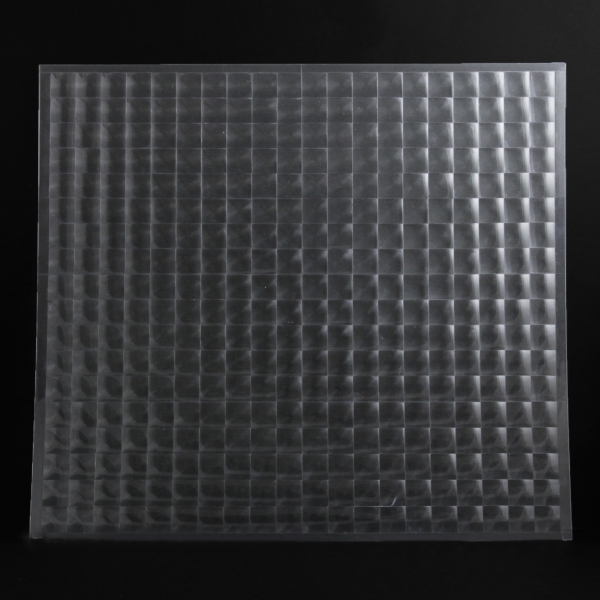
Pretend to be a fly as you look through this flat, flexible sheet of magnifying lenses. Each of the 63 squares forms a fairly powerful lens, creating a fisheye effect, like looking through the wrong end of a telescope. Look closely at each lens and you’ll see minute concentric circular ridges, which look like fingerprints, but are a marvel of optical engineering. Compared to conventional spherical lenses, this type of lens, called a Fresnel, reduces the amount of material required, by creating these ridges known as ‘Fresnel zones’. Closer to the centre they form more oblique angles, getting thinner, flatter, and more widely spaced, capturing more light. The angled ridges focus and condense the light into one point, and magnify without the need for a thick and heavy lens.
The Fresnel lens is named for its inventor, French physicist Augustin Jean Fresnel, and is pronounced frayNEL. He studied light and optics in the 19th century, inventing lighthouse lenses which could throw a beam for many miles. Glass Fresnel lenses also are used in theatre lamps, called simply ‘Fresnels’. Their use for image projection reduces quality, so they are often used only where image quality is not so important, or as an alternative to the bulk or cost of a solid lens.
Cheap, multiple Fresnel lenses like this PVC example are stamped or moulded on transparent plastic and light enough to stick to a window, fish tank or light source with tape. In this form, they’re mainly a novelty or decorative item for looking or taking photographs through; but since this type of plastic lens can be made far larger than glass ones, they are increasingly used to concentrate sunlight for heating in solar devices.
Add materials you find interesting to your own selections.
Use the  button to select a material and get started.
button to select a material and get started.

